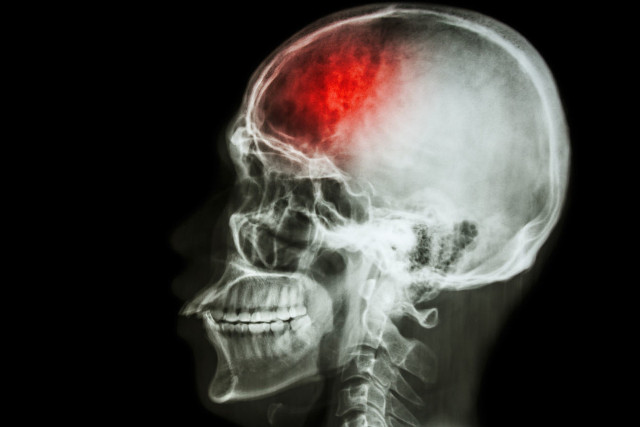Stem cells help patch brain damage in stroke victims
Researchers at the University of Georgia have developed new stem cell-based treatments for stroke. When tested on animal models, this technique has shown that it can reduce brain damage and help the brain to heal itself faster, and the results promise enough for a human clinical trial next year.
According to the CDC, stroke affects nearly 800,000 people each year in the US, and about 140,000 die, thus making it the fifth cause of death in the country.
Survivors need a long time to recover, and in severe cases, permanent brain damage may occur. Previous studies on stroke treatments may include anti-inflammatory drugs, peptides found in spider venom and catheters to remove blood clots.
A particularly promising new treatment involves stem cells. A few years ago, a London study used a set of CD34 + stem cells to stimulate the growth of new brain and blood vessels. Later, a Stanford University study restored the ability to move limbs of stroke victims after injecting stem cells into the brain.
This latest study was carried out by researchers from the University of Georgia's Center for Reproductive Biology and ArunA Biomedical, which also uses stem cells. Dubbed AB126, this treatment uses exosomes, a tiny tubular structure created by neural stem cells. Because these structures are smaller than cells, they can overcome certain barriers that cells cannot enter, carry and distribute multiple doses of renewable substances to where the body needs it most.
Steven Stice, a leading researcher on the study, said: "This is really an interesting proof, because exosome provides a stealthy, invisible, invisible property even with the body's defense mechanisms. When packing it with therapeutic drugs, this treatment can really change cell progression and improve rehabilitation. "
 Stem cells help patch brain damage in stroke victims Picture 1
Stem cells help patch brain damage in stroke victims Picture 1
The exosomes (red) are being taken by nerve cells (blue) of neurons (green) into the brains of stroke patients
The researchers tested AB126 on mice and found that treatment improved the recovery of control and memory in stroke mice. Next, the team compared the MR126 of mice treated with mice with the stroke, which was much more progressive than mice without therapy.
This new treatment reduces injury by about 35%, and halves the amount of brain tissue lost by stroke.
Scientists continue to study with a test on pigs, and get the same results. Encouraged by that, the team is currently preparing for human body research, scheduled to begin in 2019.
The study is published in Translational Stroke Research magazine.
See more:
- Bowel and gastrointestinal tract play an important role in the development of type 2 diabetes
- The most obvious signs of diabetes
- New gene therapy through the skin can help treat diabetes and obesity
You should read it
- Alzheimer's can help treat patients with brain injury
- Medical discovery: Head injuries can alter genes in the brain
- Found enzymes that eliminate cholesterol help prevent brain damage
- How does daily activities affect the brain?
- Things you need to know about brain cancer
- Transplanting a mini-human brain into mice causes concern about smart new hybrids and increasingly more human-like
- You are often teased as the 'goldfish brain', do not be sad this indicates you have a brain that works very well
- How to download Brain Out on the computer, install Brain Out on the computer
- Interesting discovery: Human brain is more flexible than chimp brain
- Answers to Test Brain Level 1 to 60 (updated continuously)
- Synthesis of answers game Brain Up
- How does India bring the dead dead to life next month?
Maybe you are interested

How to detect and treat a stroke early

Download Free Keylogger 5.4: the software to record all keystrokes of users on the computer

Android software specialized in stealing bank passwords, copying keystrokes

Nutrition for people suffering from stroke: What to eat and what to abstain?

What to do to get rid of the feeling of 'sunstroke' a third person?

If you have high blood pressure, stroke or varicose veins, apply the 7 things below to improve!






 Scientists who find proteins can prevent metastatic cancer
Scientists who find proteins can prevent metastatic cancer New drugs can prevent genes that cause cancer
New drugs can prevent genes that cause cancer Worry, depression makes you very addicted to smartphones
Worry, depression makes you very addicted to smartphones Interesting finding: Finding a bacterium can help prevent skin cancer
Interesting finding: Finding a bacterium can help prevent skin cancer Comprehensive research shows that the status of biological aging is slowing down
Comprehensive research shows that the status of biological aging is slowing down Scientists identify genes capable of burning brown fat
Scientists identify genes capable of burning brown fat